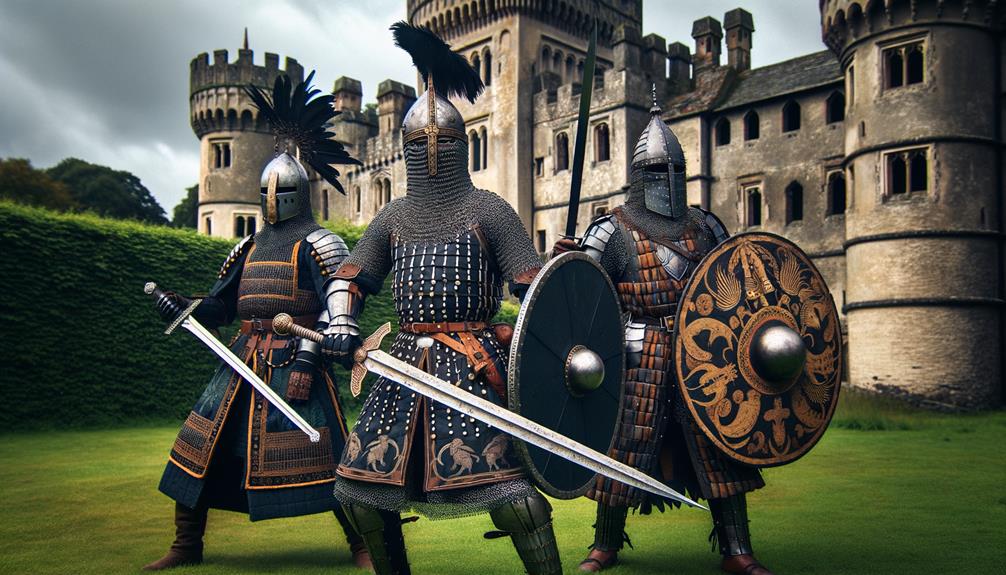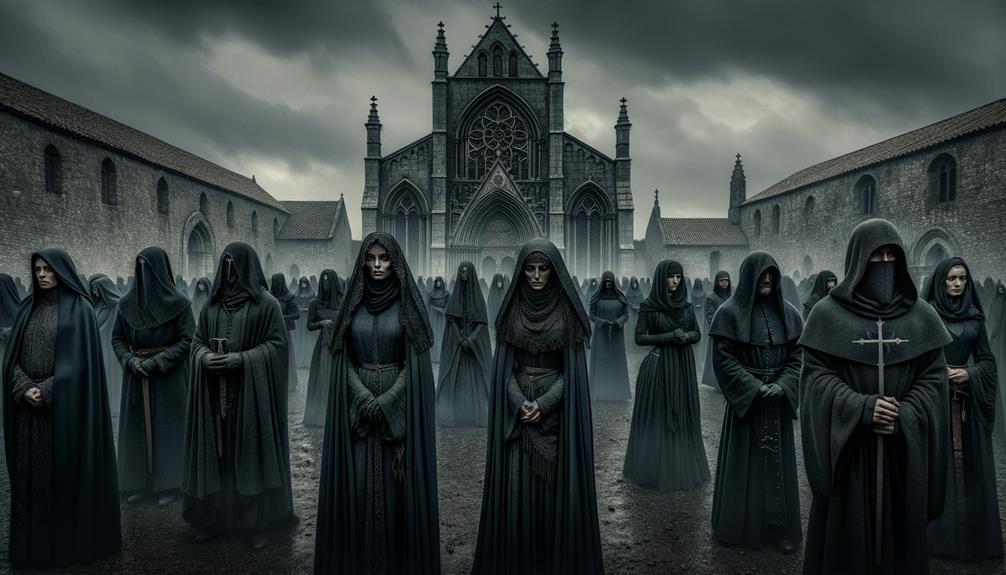In medieval Europe, veils and wimples were more than just modest garments; they conveyed social status. A piece of white linen or silk could communicate a great deal – virtue, status, even wealth. The intricate layers and embellishments weren’t just for show; they made deliberate statements. It’s easy to overlook the artistry and intentions behind these garments in today’s more casual society. Yet, the way women styled their veils and wimples reveals a lot about their world and ours. These simple fabrics offer a glimpse into medieval life and values.
Historical Background
In medieval Europe, veils and wimples were more than just a fashion statement – they conveyed social status and modesty. These head coverings, often made of white linen or silk, held significant social meaning. Women from respectable families wore them to signify decency and virtue. The wimple, fitted closely under the chin, conveyed a sense of propriety and restraint.
Historical laws even regulated these garments. The style and fabric of veils varied depending on social status. Nobles wore elaborately decorated veils, while commoners wore simpler versions. White was a popular choice, symbolizing purity, a highly valued virtue in that era.
It’s fascinating to see how the evolution of veil fashion mirrored societal shifts. These head coverings reflected not just personal taste but also broader cultural norms. They adapted to the times, influenced by changing views on women’s roles. The wimple and veil serve as a historical lens, offering insight into medieval European society’s values and hierarchies. Our clothing often reveals much about our identity and social expectations.
Materials and Construction
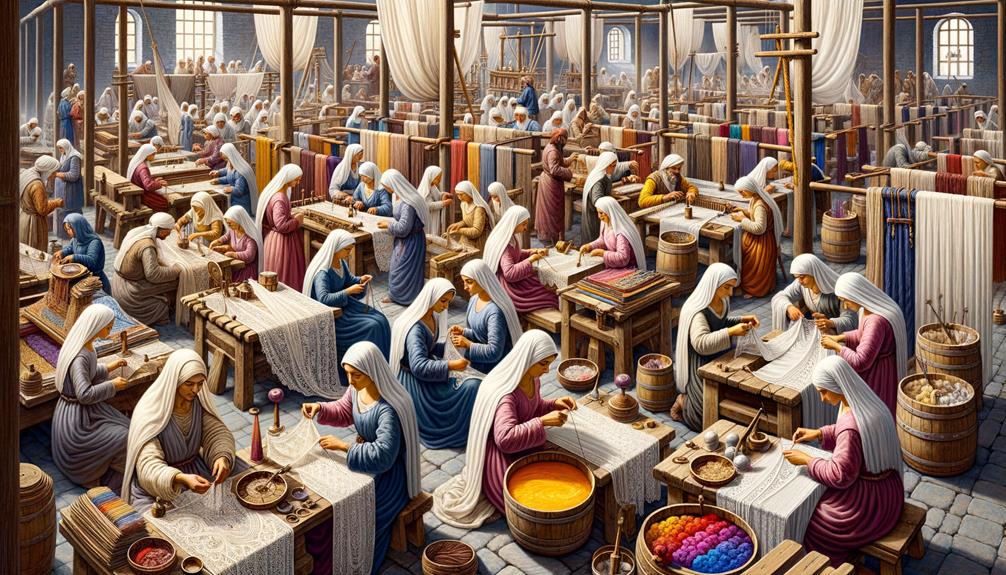
Crafting wimples and veils from linen, silk, and wool, medieval women showcased their social standing through their fabric choices. The richer you were, the finer the material. Silk and gauze-like fabrics signified wealth, while coarse wool or linen hinted at simpler means. These veils weren’t just worn for modesty; they were a statement of identity.
Wrapped around the neck, the wimple provided protection from the sun, a practical yet elegant solution. Finely woven linen and wool allowed for breathability and comfort. There was utility in the elegance. The modesty of their plain white design, sometimes dyed with saffron, was a nod to the era’s cultural ideals. No elaborate braids of decoration here, just pure functionality with a hint of grace.
The variety of fabrics available meant choice, but also constraint. The absence of lace or embroidery spoke volumes – decorations were luxuries not everyone could afford. Some wimples were supported by wire or wicker, adding an elaborate touch for those who could indulge. This construction, both simple and intricate, showcased a nuanced blend of necessity and status. The materials and their construction were more than just fabric; they reflected one’s place in the world.
Styles and Variations
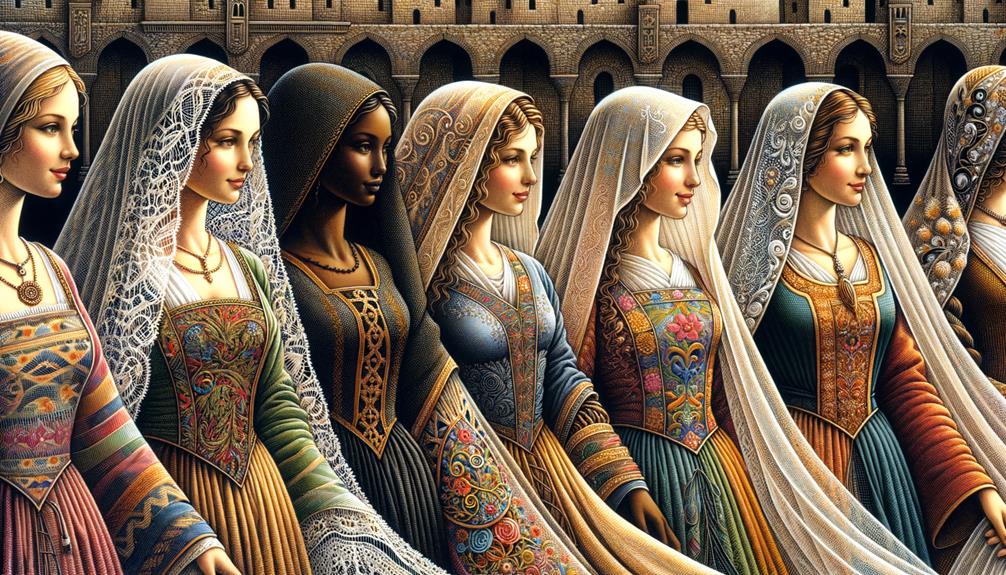
As we explore the world of medieval headwear, we find that wimples and veils took on various forms, reflecting the wearer’s social status and personal taste. In medieval Europe, women wore intricate head coverings that served as both a symbol of modesty and a means of self-expression.
Wimples, typically made of delicate linen or silk, involved draping fabric around the neck, cheeks, and chin. The styles of veils varied greatly, with wealthier individuals often layering multiple veils, adorned with embroidery, pearls, and gold embellishments. This layering created unique, personalized looks, as there was no standard size or shape.
Artistic representations show that these veils and wimples were not only functional but also artistic. Overlapping layers and elaborate decorations were common, yet they still maintained the modesty expected at the time. Historical laws and clergy criticisms highlight how these head coverings balanced practicality with social expectations.
In essence, the veil and wimple served dual purposes: they were a mark of decency and a reflection of the wearer’s taste and status. This intersection of function and fashion continues to inspire and resonate.
Social and Cultural Significance
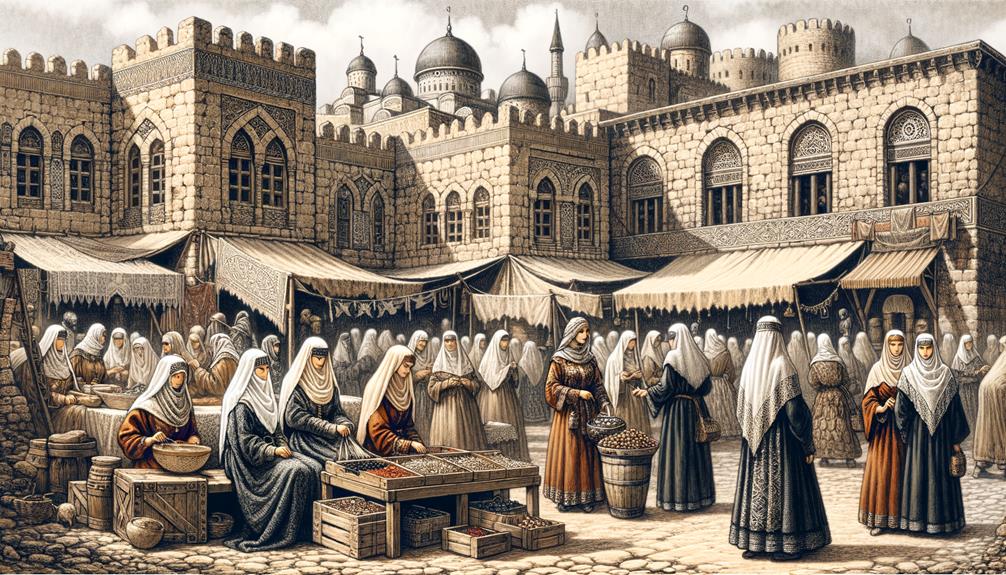
Veils and wimples in medieval society weren’t just about modesty; they were a clear indication of one’s social standing and adherence to cultural norms. A married woman could signal her status and respectability by wearing these pieces of cloth. Fine silks were usually the material of choice for those of high status, while simpler fabrics were for the lower classes.
During this time period, strict rules dictated how and when women should veil, emphasizing modesty and propriety. A wimple, usually worn around the neck and chin, became a symbol of decency. The cultural significance of these garments can’t be overstated – they were more than just fashion; they were statements.
Here’s a breakdown of how veils and wimples symbolized social and cultural norms:
| Social Status | Fabric Type | Usual Wearer |
|---|---|---|
| High | Fine silks | Married women |
| Middle | Mixed fabrics | Respectable women |
| Low | Coarse cloth | Common women |
| Religious | Simple linen | Nuns |
| Nobility | Embroidered | Ladies of the court |
Understanding the social and cultural significance of veils and wimples offers insight into the values and expectations of medieval society. As these garments evolved over time, they reflected broader changes in societal norms and attitudes toward modesty and decency.
Wearing Techniques
Mastering the art of wearing veils and wimples was essential for medieval women. I can imagine the Wife of Bath expertly centering the point of her wimple high on her chin, wrapping the ends up to the crown of her head, and securing them with pins. The choice of fabric, whether wool or linen, revealed a lot about a woman’s status and comfort level.
To style a veil, you’d find its center, place it on your forehead, and pin it through the layers. The veil should fit snugly over your hair from forehead to bra band. When paired with a wimple, this ensemble discreetly covers the head and neck, showcasing modesty.
The brass of Margaret, often referenced, showcases the artistry of these techniques, but finding evidence of the exact methods remains elusive. Women brought back these practices, adapting them to express their personal and cultural identities.
In these layers of cloth, there’s a story of control, modesty, and innovation. With minimal fabric, the veil and wimple achieve maximum impact, striking a delicate balance between form and function, deeply rooted in tradition yet resonant with today’s quest for authenticity.
Frequently Asked Questions
What Is a Wimple and Veil?
A wimple and veil are traditional medieval head coverings worn by women. The wimple frames the face, while the veil covers the hair. These headpieces symbolize modesty and decency, offering a glimpse into the cultural norms and societal expectations of the time.
How to Wear a Medieval Wimple?
Wearing a medieval wimple is like stepping into the past. I place the center on my chin, wrap the ends up to the crown, overlap, and pin, recalling a time when modesty was a symbol of strength and grace.
What Is the Difference Between a Coif and a Wimple?
A coif is a snug-fitting cap worn by men, often beneath helmets. In contrast, a wimple is a delicate head covering worn by women, symbolizing modesty. The practicality of the coif is a stark contrast to the elegant, cultural statement made by the wimple. This distinction is quite fascinating, really.
What Is a Wimpole?
I’ve never heard of a “wimpole.” It sounds like a misheard or misspelled version of “wimple.” If it’s a real term, I’m intrigued. These kinds of mix-ups highlight how easily historical fashion terms can get distorted or forgotten over time.



